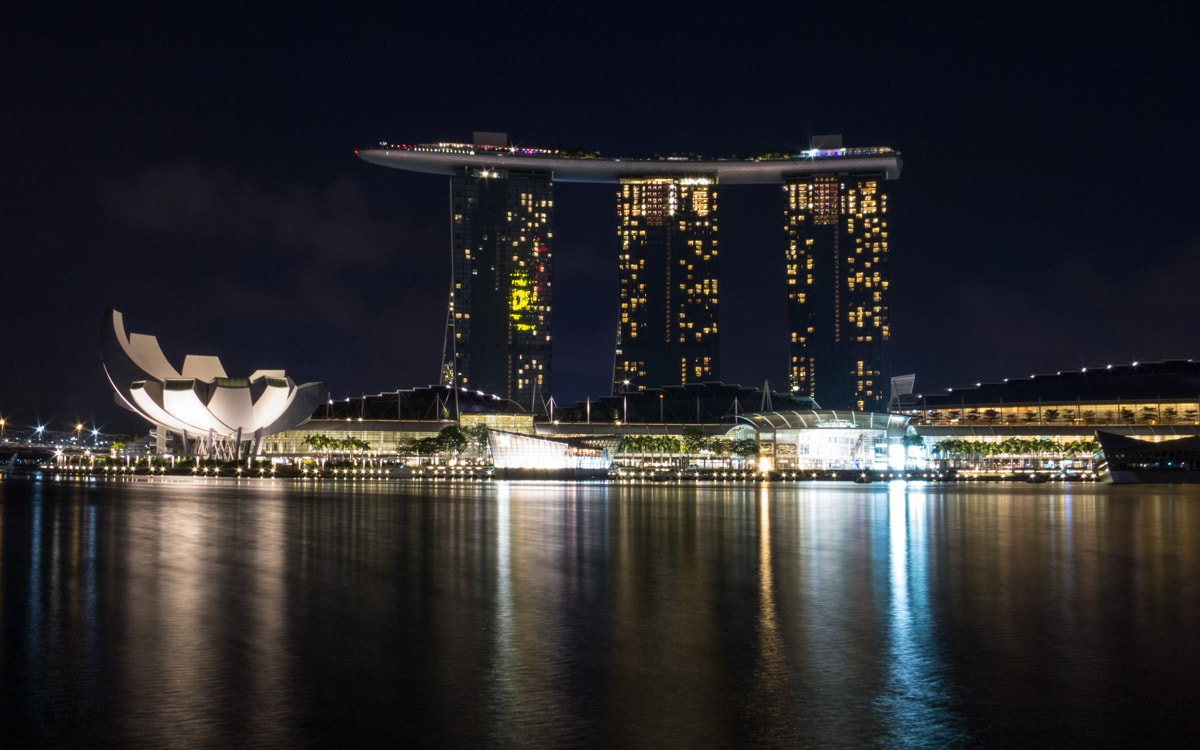
I just returned from my five day trip to Singapore. Since this was my first time visiting Singapore, I had no idea what to expect before leaving. Through my little research, I knew it was clean and tropical, and the best spot to eat in Singapore was at one of the many hawker centres. That’s about all I knew.
But I went with an open mind as I love visiting new cities. And when I landed, I hit the ground running, trying to explore and take in as much as possible. And I learned things, some old and some new, that I wanted to share with you.
With limited time, I couldn’t visit every site I wanted, but I still learned about the culture, people, and, most importantly, the food of Singapore.
Here are 14 things I learned on my first trip to Singapore.
Table of Contents
1. It was ridiculously hot and ridiculously humid
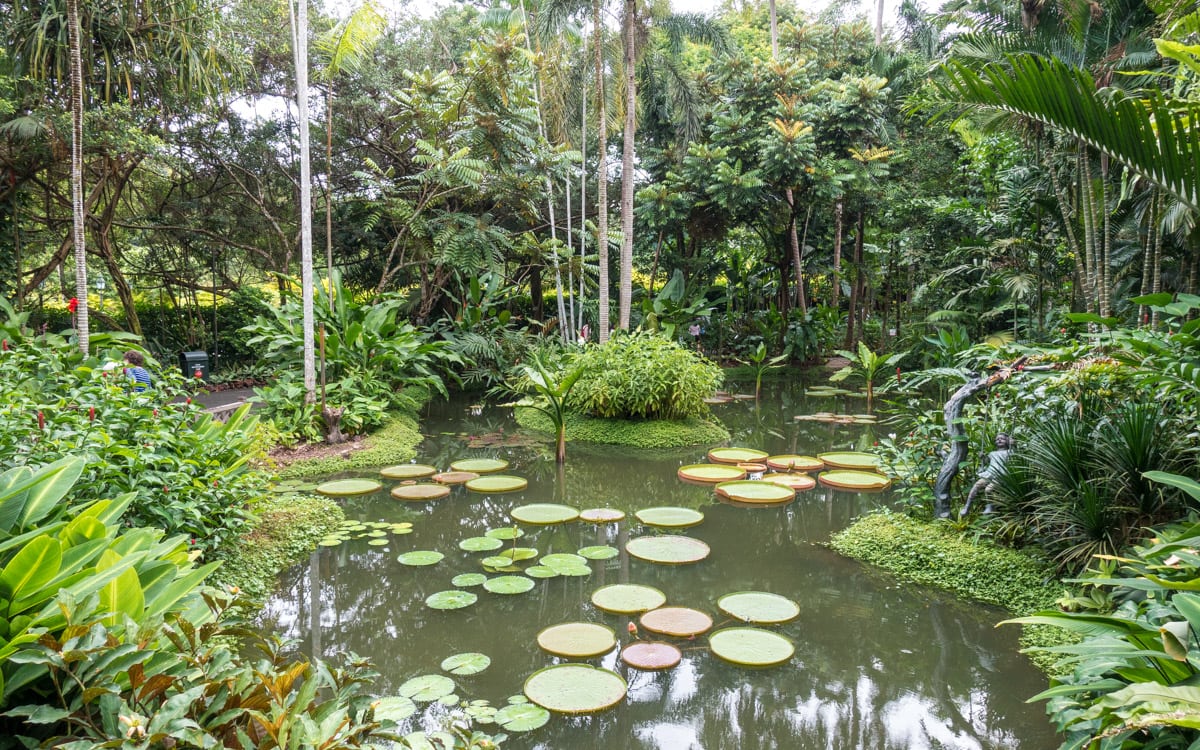
I wouldn’t say I like hot and humid weather, but that didn’t stop me from wanting to visit Singapore.
I began to regret my decision when I walked outside the arrivals hall at Singapore Changi Airport. It was midnight, and it was sweltering hot, and I was already sweating. Luckily, my taxi driver was cranking the air conditioner.
The heat and humidity slowed me down and affected my itinerary. I couldn’t move as fast as I wanted to. And I had to stop multiple times during the day for water and air conditioning, whether at a restaurant, bar, or mall.
Plan your activities early in the morning or at night when it’s slightly cooler. Unless it were an indoor activity, I would avoid being out in the sun during the heat of the day.
2. Singapore is a mix of many cultures and ethnicities
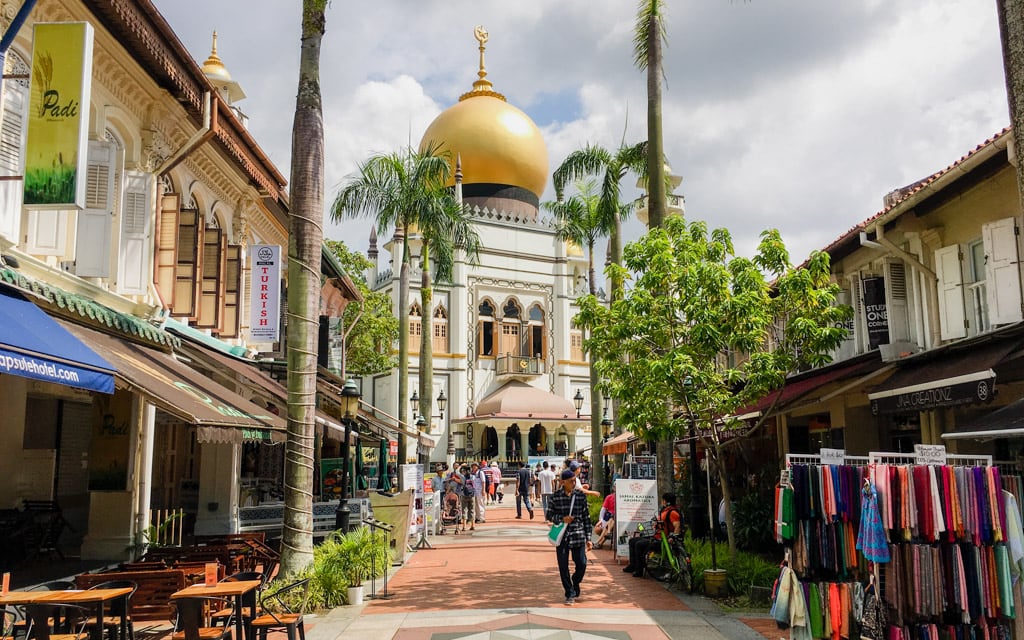
Due to its strategic location at the southern tip of Malaysia, Singapore has become a melting pot of cultures and ethnicities.
Over the years, travelers worldwide have made their way through Singapore. Many stayed.
Today, the majority of Singaporeans are Chinese, Malay, and Indian. There is also a growing community of Filipinos, Bangladeshis, and Thais.
With a wide range of cultures comes various traditions and, best of all, food. Singapore has one of the most diverse food scenes anywhere in the world. Just visit one of the many food hawker centres to see for yourself.
3. Literally, everyone in Singapore speaks English

I was surprised by how many people in Singapore spoke English.
Since I have yet to learn Mandarin, Malay, or Hindi, I worried I would have trouble communicating with locals while visiting.
Surprisingly, I never had issues communicating with people, whether at a restaurant, hawker centre, or riding in a taxi. Everyone seemed to speak English, or at least enough to get by.
4. The food is diverse and delicious
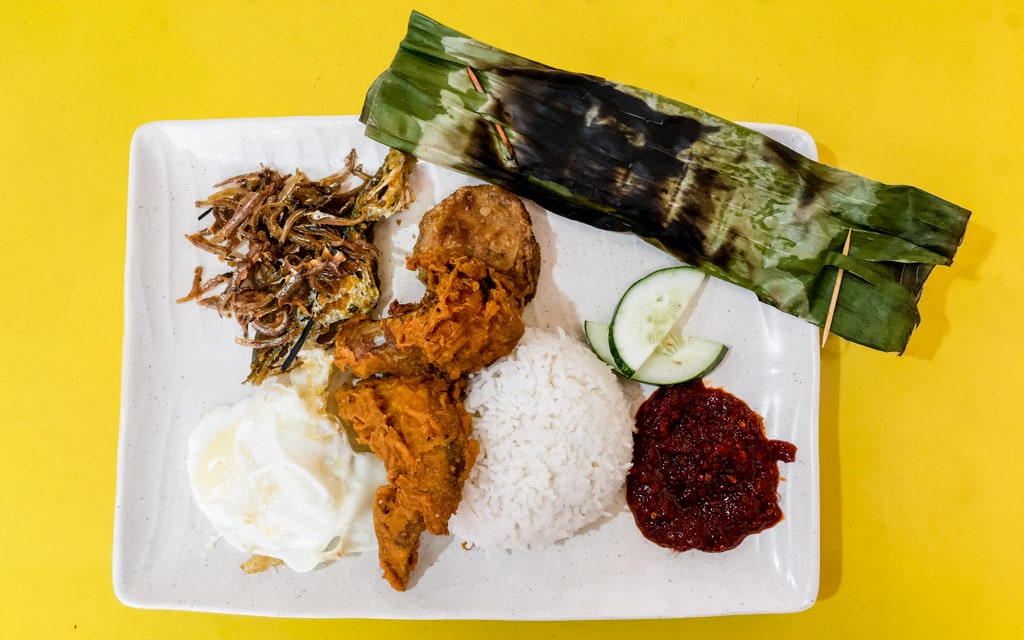
As mentioned before, Singapore is a melting pot of many cultures. With many cultures comes a diverse range of foods.
After visiting Singapore, I consider it one of Asia’s best food cities. From restaurants to hawker centres to 24-hour hole-in-the-walls, Singapore is a great place to eat.
People in Singapore love their food and love to tell travelers where to eat. On multiple occasions, locals approached me to give me their recommendations on where I should eat.
But wait, there’s more. Every time I rode in a taxi, my taxi driver would point out restaurants along the route where I should eat. The locals always know best.
5. Hawker centres are theme parks for foodies
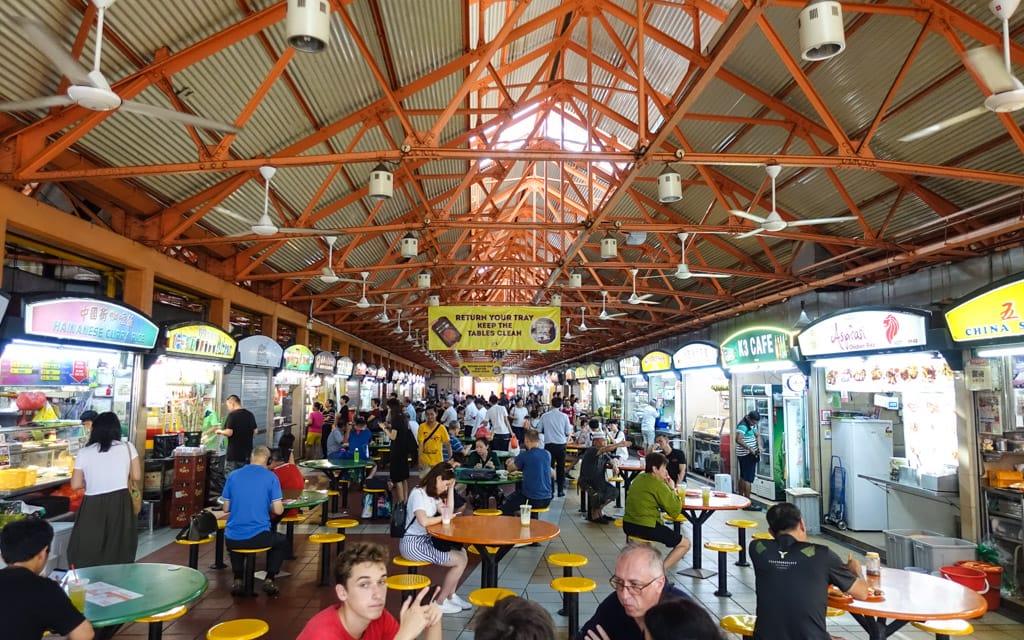
The hawker centres were the best part of visiting and eating in Singapore. For those unfamiliar, hawker centres are open-air food centres home to various stalls selling inexpensive street food.
In the past, street food was a big problem in Singapore. These unlicensed street hawkers were often unhygienic and served dangerous food. The government found a way to solve the problem: move these vendors from the street to government-inspected food centres monitored for proper food handling and food safety.
If you want to eat cheaply, head to one of the many hawker centres. But don’t be fooled by the cheap prices. The food is legit and often better than any restaurant in Singapore. Even celebrity chefs such as Anthony Bourdain and Andrew Zimmern have spent time eating through one of the many hawker centres around the city.
If you have limited time, try Maxwell Road Hawker Centre, Adam Food Centre, and 51 Old Airport Road Food Centre & Shopping Mall.
6. Compared to hawker centres, restaurants were expensive
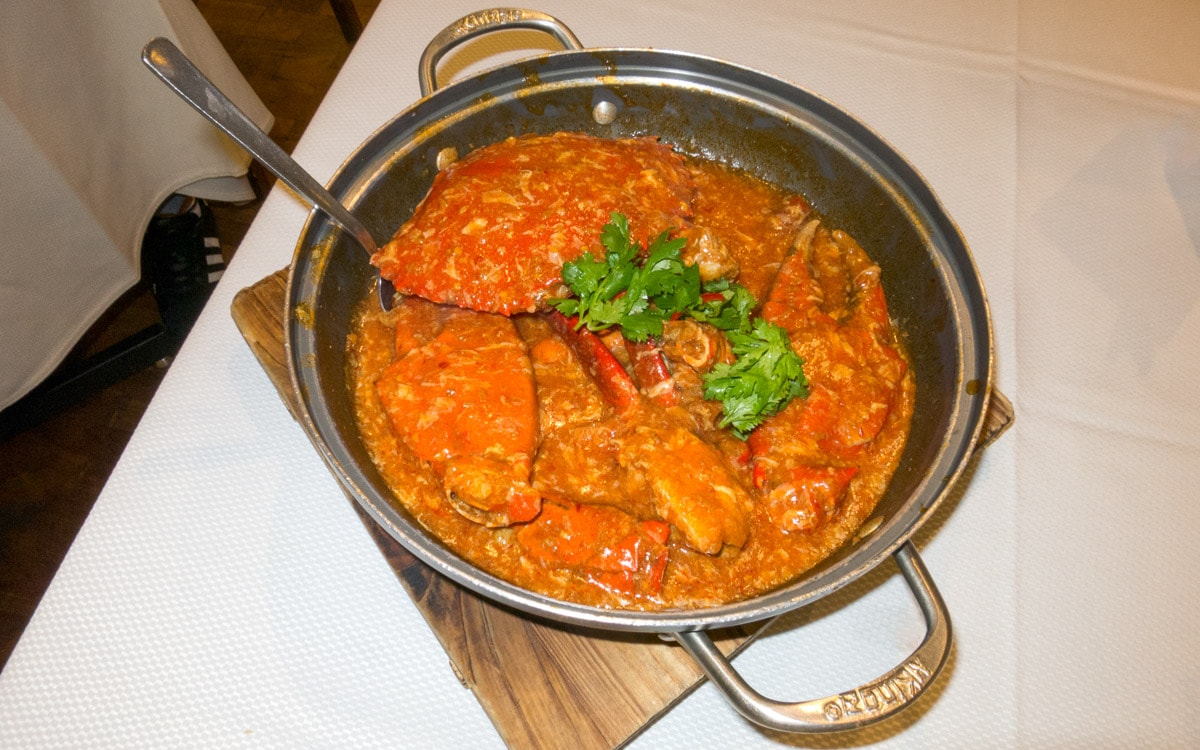
I was surprised by just how expensive restaurants in Singapore were, especially compared to the prices and food quality at hawker centres.
The chilli crab meal at Jumbo Seafood Restaurant cost me about $130 USD. I understand that crab is expensive in the first place, but I expected everything to be cheaper in Southeast Asia.
After my first day, I stuck with the hawker centres. For $130, I could eat like a king for a week. But don’t let this deter you from visiting the many great restaurants in Singapore.
7.Tian Tian Hainanese Chicken Rice is overrated
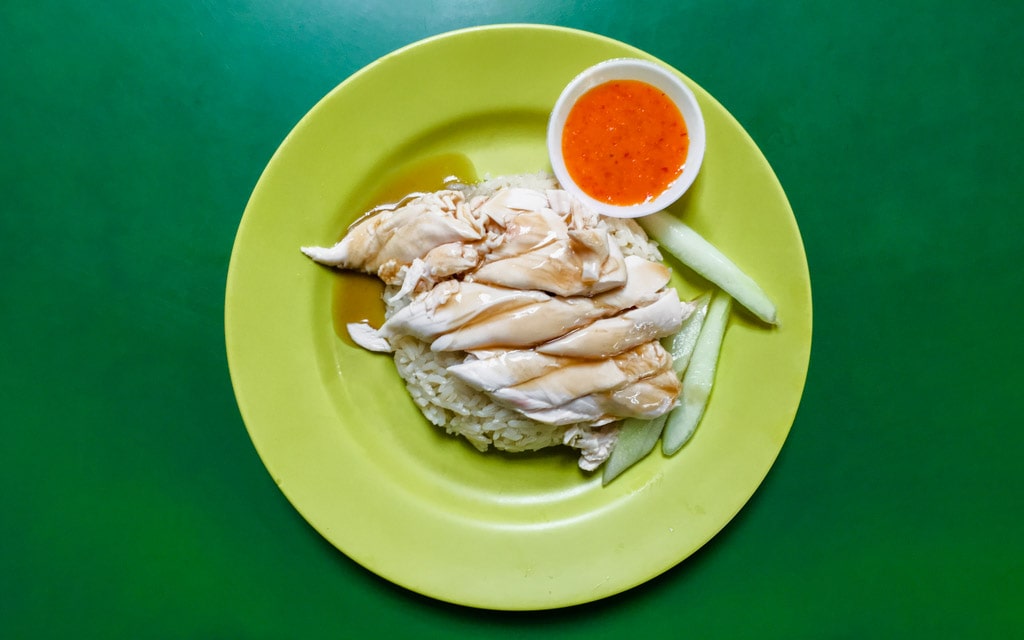
Tian Tian Hainanese Chicken Rice inside Maxwell Food Centre is Singapore’s most famous hawker stall. The stall became famous when Anthony Bourdain stopped by on his television show “No Reservations.” He claimed it was one of the best chicken dishes in the world.
Thanks to Anthony Bourdain, I had to wait about 30 minutes in a line of tourists before I even ordered. But I have no problem with waiting in line for great food.
While the chicken was tender and moist, it was simple. I am glad I tried it once, but with so many delicious options at Maxwell Food Centre and other hawker centres, I wouldn’t return to Tian Tian Hainanese Chicken Rice.
Click here to read my full review of Tian Tian Hainanese Chicken Rice.
8. The city seemed to come alive at night
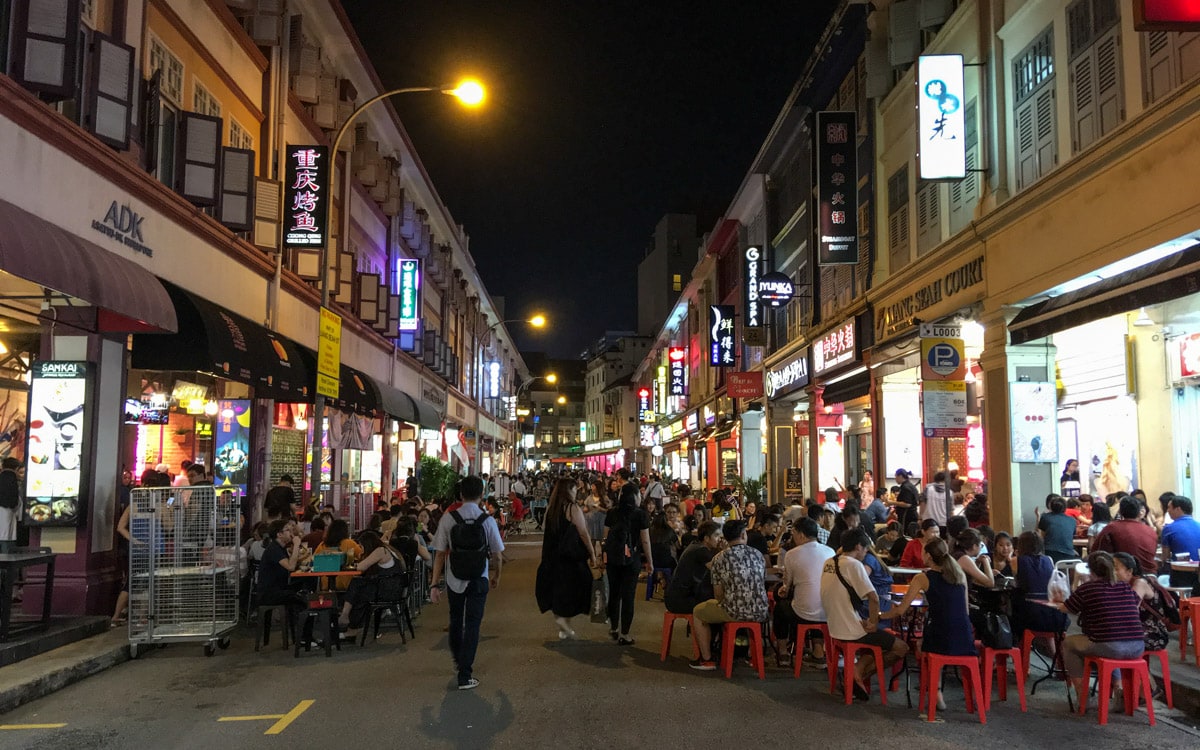
The city seemed to come alive when the sun set and the temperatures slightly dropped. While many cities become quiet when the sun goes down, this was not the case in Singapore.
People who stayed inside during the day, enjoying their air conditioner, made their way outside at night to eat, shop, drink, and enjoy the city.
Every place was open late, including restaurants, bars, and shopping malls. Even after midnight, I saw a constant flow of tourists around Marina Bay with their tripods and cameras in hand.
Along with tourists were groups of cyclists and those going for late-night runs and walks around the bay.
9. Singapore is one of the safest countries in the world
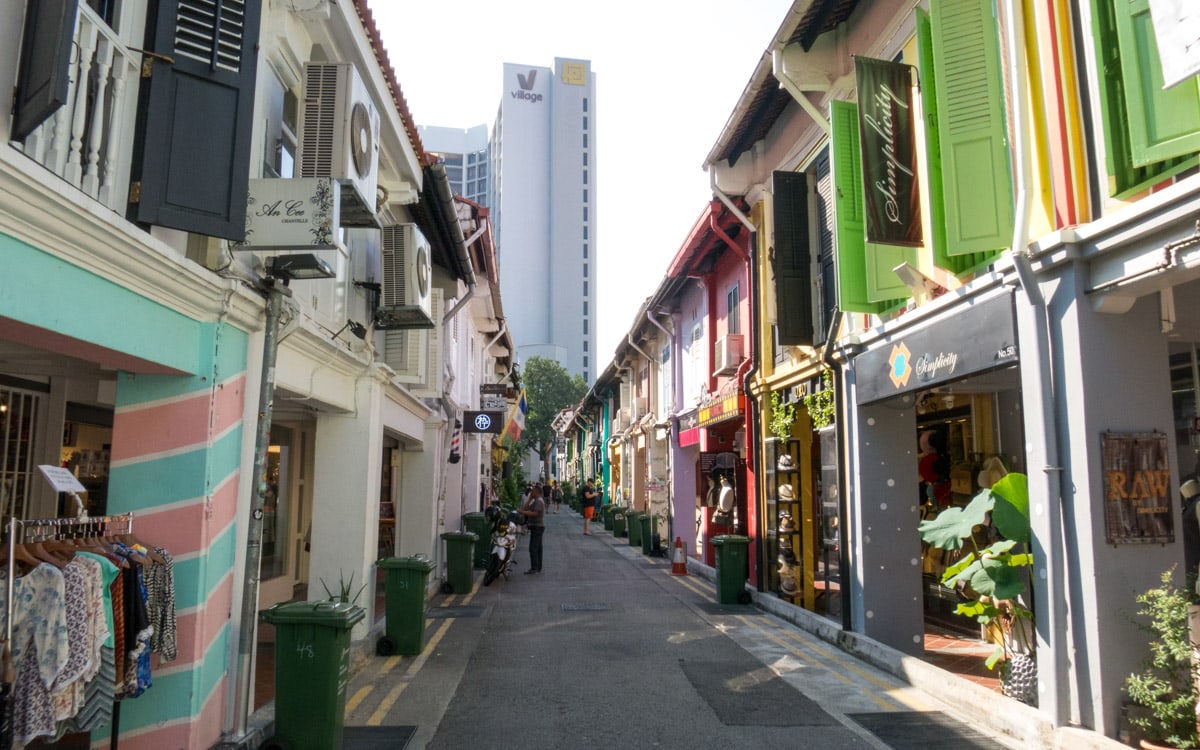
Singapore is one of the safest cities in the world, which is one reason I enjoy traveling here. I never have to worry about my safety. Crime is exceptionally rare due to tough penalties for all crimes, including low-level crimes.
Whether out exploring the city late at night or during the day, most will never have any issues with their safety. Now, when traveling to any city, always use common sense. And if you are looking for trouble, you can find it.
I know they are out there somewhere, but I never saw one police officer or security guard on my five day visit.
10. Chewing gum is banned
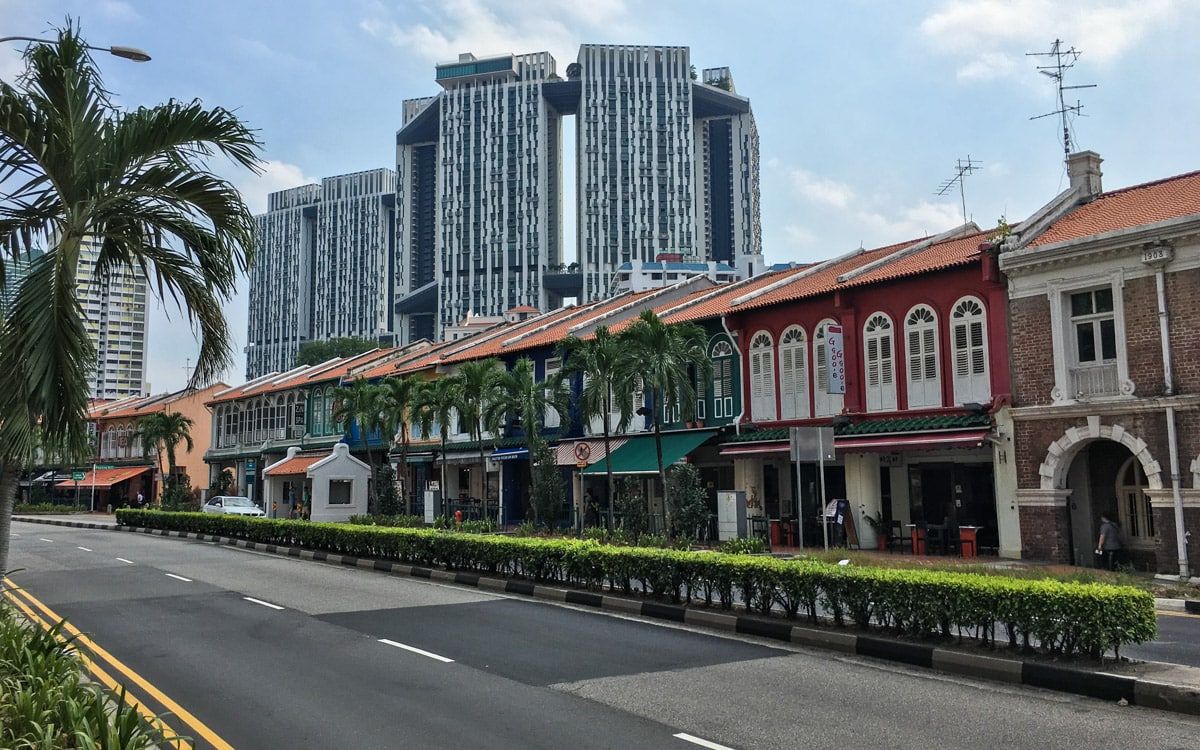
I always bring chewing gum on any international trip I take. When I visited Singapore, I had to leave the gum at home. Chewing gums, except dental and nicotine gums prescribed by a doctor, are banned in Singapore.
I’m not making this up.
In 1992, Singapore banned the sale and importation of chewing gum after vandals disposed of gum in mailboxes, buildings, keyholes, elevator buttons, and MRT trains.
The chewing gum ban is a strictly enforced law. Those caught importing gum into the country can face fines of up to S$1,000 ($743).
Instead of gum, bring breath mints.
11. The city is expanding
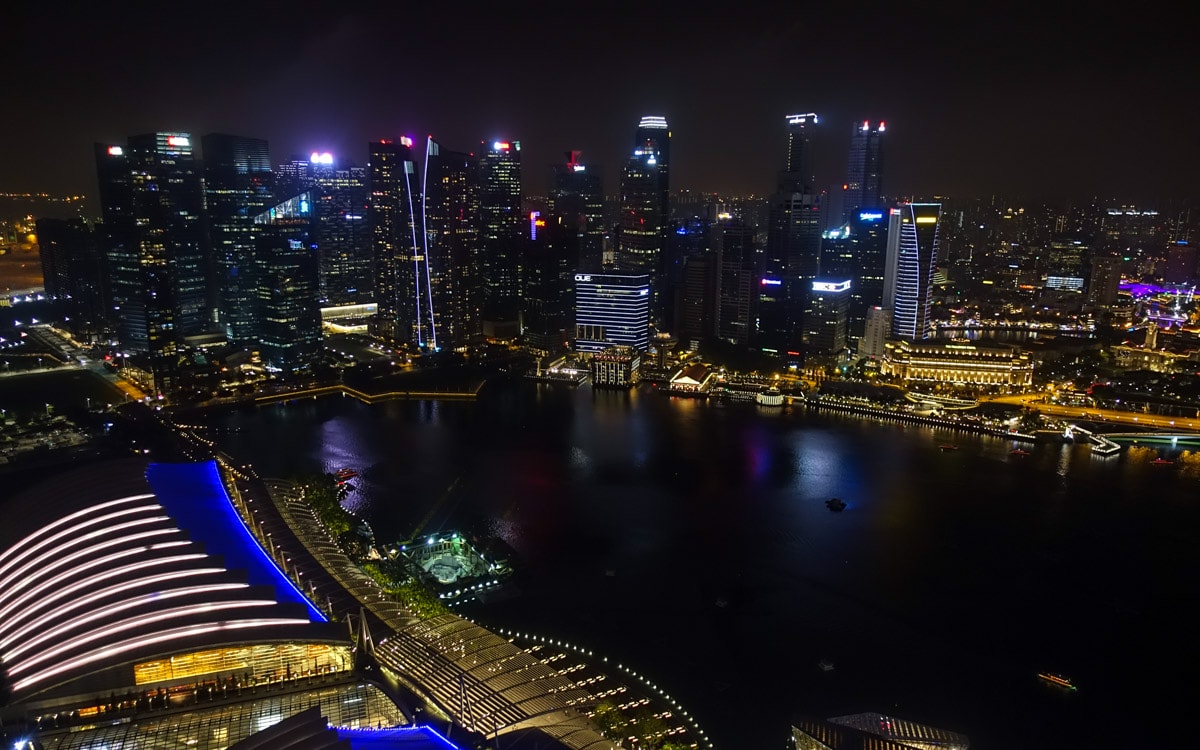
In the tiny city-state of Singapore, land is at a premium, and rents are not cheap.
While traveling around, I was surprised to see brand new financial buildings and empty spaces of land. Through land reclamation, Singapore has been able to expand its land area. Much of the land used for new, modern buildings didn’t exist until recently.
Since independence, extensive land reclamation has increased the total size of Singapore by about 23% or 130 square kilometers. New land is made by draining submerged wetlands and filling areas with cement, clay, and dirt.
The government plans to expand Singapore by an additional 100 square kilometers by 2030, so the city might look different the next time you visit.
12. Singapore is very green
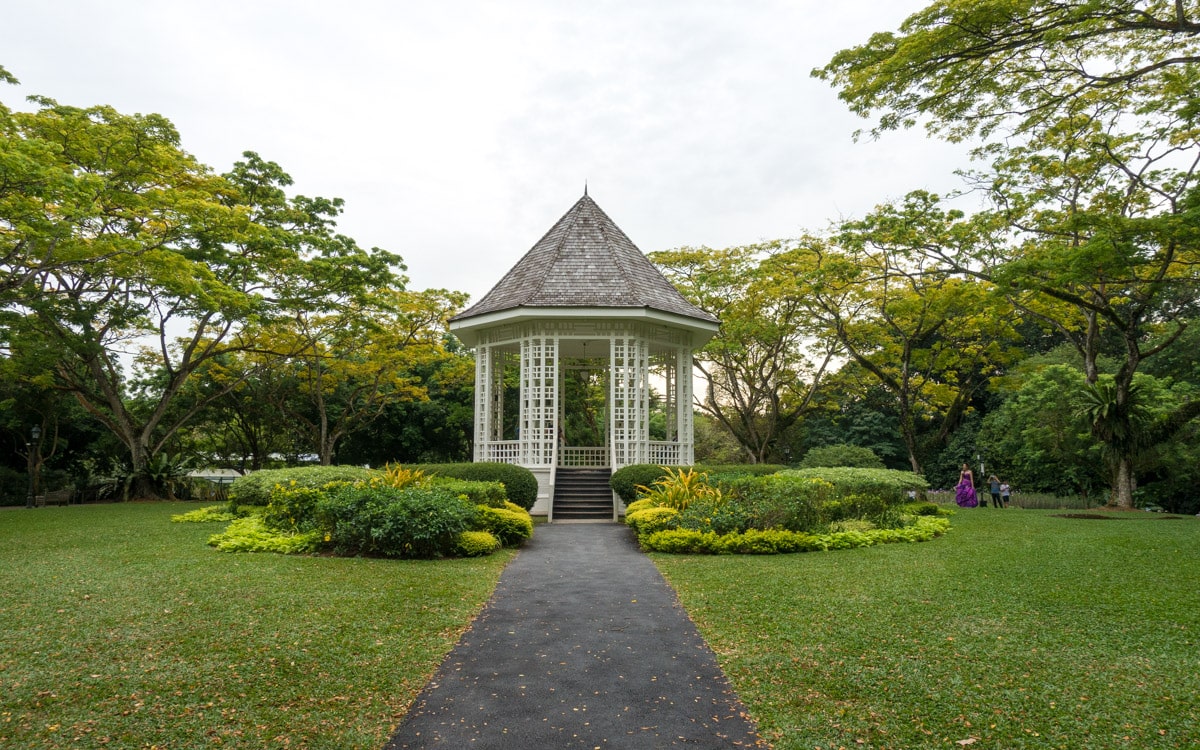
Even with limited space, Singapore was surprisingly green. Nature lovers will be pleased to find so many green spaces and parks.
Thanks to a “green policy,” nearly 10% of land in Singapore has been set aside for parks and nature reserves. This policy, launched in 1963, aims to enhance greenery in the quickly growing urban city.
One of my favorite parks to visit in Singapore is Gardens by the Bay, a 250-acre nature park built on reclaimed land. The best time to visit is at night when large vertical gardens known as “Supertrees” are colorfully lit.
13. Only hotel guests can swim in the infinity pool of the Marina Bay Sands
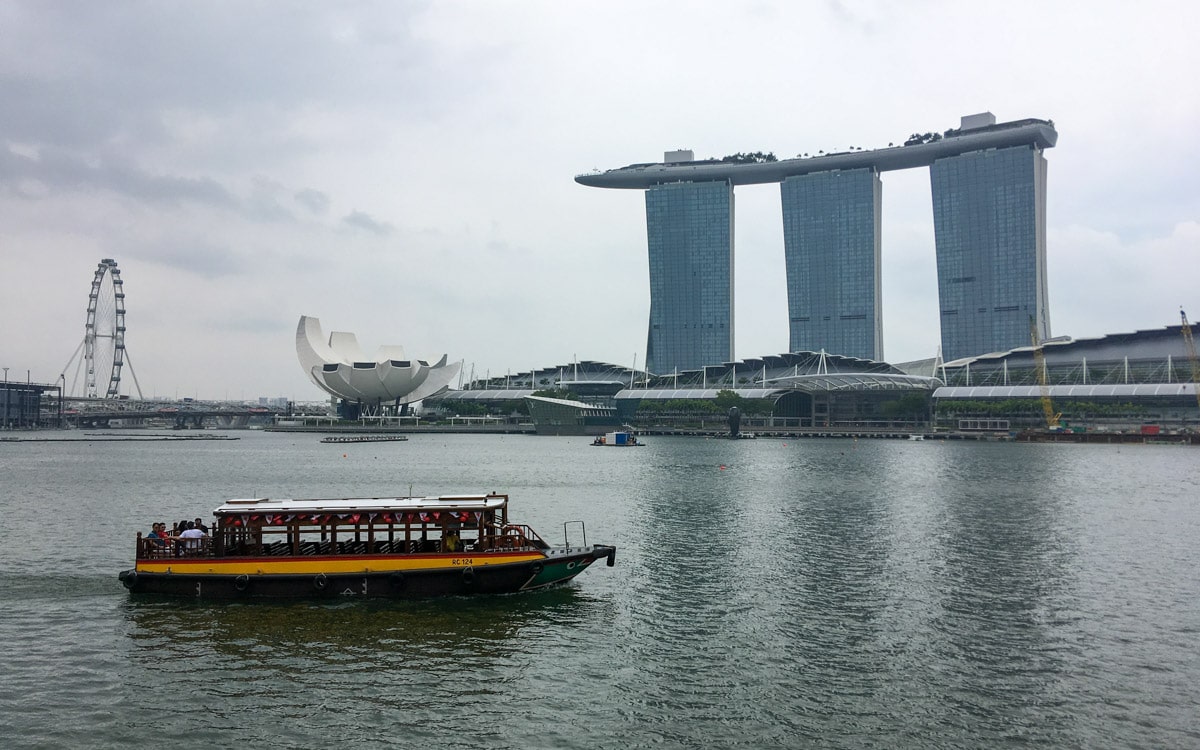
I know you’ve seen it: those photos online or on Instagram of people swimming around a rooftop infinity pool with stunning views of downtown Singapore. These photos are from the infinity pool located on the roof of the iconic Marina Bay Sands Hotel.
I wanted to be one of these people. I wanted to take those same awesome photos.
Unfortunately, the pool was reserved for hotel guests only. I found this out after I already booked another hotel.
Don’t want to spend $300 a night at the Marina Bay Sands but still want to experience the views? For S$23 (or about $17.09), you can take the elevator up 57 floors to the Sands Skypark Observation Deck. You can enjoy stunning panoramic views of the city and marina from here.
14. An EZ-Link card or the NETS Flashpay Card is worth the investment

Singapore’s public transportation is one of the most efficient in the world. It’s clean and straightforward, and you can get anywhere in the city.
If you plan to use public transportation on your trip, I recommend purchasing an EZ-Link Card or NETS Flashpay Card. Both are essentially stored-value cards, similar to credit cards, that can be used to pay for public transportation fares in Singapore.
If you hate fumbling around for coins to pay for fares like me, getting one of these cards is a must. The fare is deducted from your pre-loaded card when you use it, and you can quickly reload your card with cash at any time.
These cards can be used to pay for certain goods and services at merchants that display either an “EZ-Link” logo or “NETS FlashPay” logo.
The EZ-Link Card costs S$10 (S$5 non-refundable card cost and S$5 credit) while NETS Flashpay Card costs (S$5 non-refundable card cost and S$7 credit). Both can be purchased at any TransitLink Ticket Office.
Last Updated on December 17, 2024
Related Posts